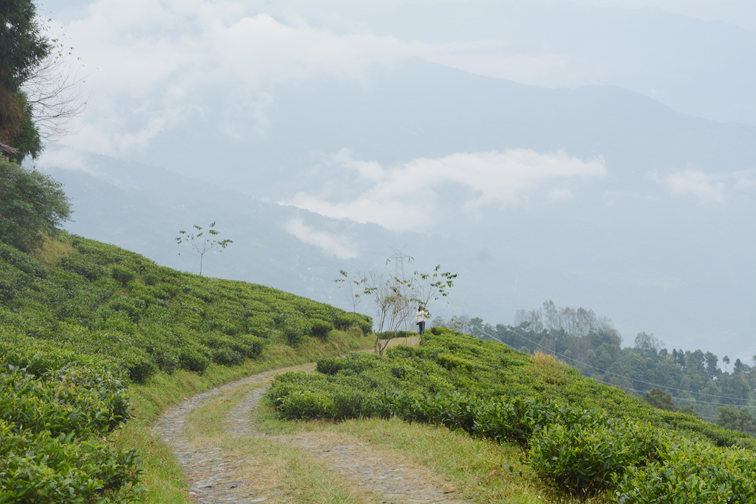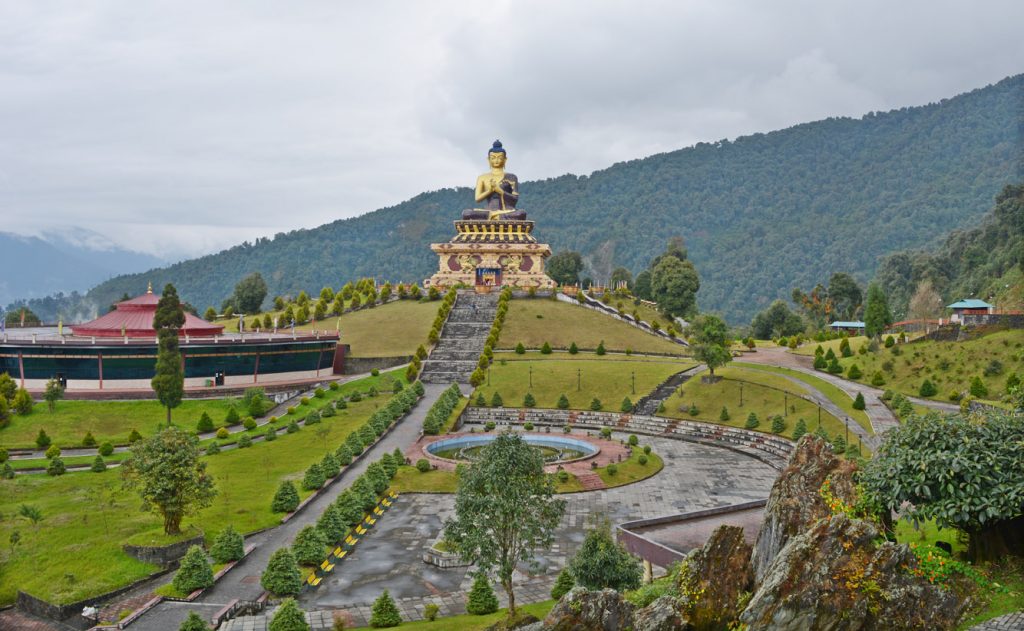This Gangtok story opens with a bird’s eye view of the city nestled in the folds of the Himalayas. As the 935-metre cable car from Deorali Bazar to Tashiling Secretariat rolls downhill at a constant pace, Gangtok opens up steadily from being a patchwork of colours at the base of verdant hillsides into a settlement inhabited by a people culturally distinct.
Once off the cable car, it is time for a worm’s eye view of Gangtok, which is equally if not more interesting. Perhaps the best place to begin experiencing Gangtok is the MG Road.
Swachh Gangtok
Mahesh says MG Road is the most happening place in Gangtok. The central shopping hub with shops and restaurants lined up along both sides of the road gives the visitor a sneak peek into the culture and cuisine of Gangtok. “‘Had we landed up in some foreign land by mistake?’ that was the first thought that struck us as we entered MG Road,” recalls Mahesh. The first thing he noticed was how clean the 1 km of road was with boards everywhere proclaiming “Welcome to MG Marg, Spit- and Litter-Free Zone”.

The central shopping hub is laid out in the form of an open mall or boulevard square. It is the best shopping destination for tourists and a great place to take a leisurely stroll or just sit on benches and soak in the ambience.
This pedestrians-only zone has a wide, free-parking area that features an imposing statue of Mahatma Gandhi. Victorian lamps and benches laid out along the path add to the charm of the place, especially after dark when the lights come on.
Buildings on both sides of MG Road are painted green in line with the state government’s green initiative. The place is also popular for its local food and culture festival held in December each year. Connoisseurs from all over the country flock to Gangtok to attend the festival. But a Gangtok visit is not just about the city and its sights. It has both natural and man-made sights to offer, each competing with the other in magnificence. But the group had to end its first day with the MG Road trip and retire for the night. The second day had even more interesting sights of Gangtok to offer.
Falls for break
About 12 kilometres from MG Road, is a natural wonder showcased by human ingenuity spread over two acres. In the words of Sagar Sasmal, “The Ban Jhakri waterfall is a beautiful spot with beautiful and lush green surroundings that definitely helps one escape the fast-moving city life and unwind.”

Ban Jhakri is a composite word made up of ‘Ban’ meaning forest and ‘Jhakri’ meaning traditional healer. The place, the group learned, derived its name from forest healers who dwelt in rock caves in the area and worshipped spirits. It is folklore among the Nepali community of Sikkim and they still believe in the presence of the healers in the area.
The waterfall is about 40 feet high and an Energy Park has been set up at its base. Beautifully landscaped gardens surround the falls with beautiful statues of Lyam Lymay, Mangpas, Lepcha and Ban Jhakri ancestors. Numerous ethnic sculptures and figurines showcasing the Jhakri culture dot the Energy Park. The park figurines depict rituals, healing ceremonies and the initiation as a ‘Jhakri’, among other things.
The park also offers several recreational activities and has refreshment stalls, besides places to rest and a swimming pool for visitors. While leaving the falls and the energy park are not happy propositions for any visitor constraints of time forces the group to their next destination. But the next site is no less captivating.
Organic tea
The Temi Tea Estate in Ravangla is now popular for village tourism. The visitor is greeted by tea plantations covering steep slopes of the Tendong Hills ranging between 1,200 metres and 1,800 metres in height. The tea garden is spread over 177 hectares and was established in 1969 by the Government of Sikkim to produce premium quality tea leaves that are in demand internationally. The path to the processing plant, is hedged by well-trimmed cherry blossom trees amid fields lush with ferns and grazing grasses. The snow-capped Khangchendzonga stands like a sentinel in the backdrop offering mesmerizing views. “It takes tourists completely into a state of awe,” Prabhudatta Das says.

The Temi tea garden produces about 1 lakh kilos of tea each year using organic farming methods under guidelines of the Institute of Marketecology (IMO) of Switzerland. “Local shops sell packaged tea to tourists,” Das reminds. One other thing that has to be remembered is that food costs slightly more in the Temi tea garden area than in the city. But the plenty of food for the senses that Sikkim still has to offer makes the cost of food worth it.
The Buddha park
Ravangla in south Sikkim is a must-visit destination, as Binod Mohapatra found out. “The Buddha park of Ravangla, otherwise called Tathagata Tsal, was developed from 2006 and has a 130-ft tall statue of the Buddha as its centre of attraction. The statue was consecrated March 25, 2013, by Dalai Lama, and has become a major stop by on the ‘Himalayan Buddhist Circuit’. The statue marks the 2550th conception commemoration of Gautam Buddha,” Binod explains. The park was brought into the Buddhist circuit under a state government initiative to promote tourism. The park has beautifully laid out walkways, gardens and space for visitors to appreciate the quiet environment. The site also has a museum and a meditation centre for Buddhists.

The biggest attraction of the park, though, is the views that it offers of the mountains and the Cho Djo Lake. It is a spiritual experience even for visitors who may not have come to the place with such intentions. The spiritually inclined have another place to visit, and it is called the Char Dham.
Char Dham
Char Dham is a huge pilgrim centre cum cultural complex developed by the Sikkim Government to promote religious, eco and village tourism in the state. It is spread over 29 hectares atop a hill known as the Solophok hill in Namchi of south Sikkim. This temple complex is also known as Siddheswar Dham and was inaugurated November 8, 2011.

For the mobility-impaired the complex offers battery-operated carts and separate entrance. Also, a Yatri Niwas with 96 rooms and a budget hotel serving exclusively vegetarian food have been set up at the complex. The rooms are clean and spacious and the environment quiet. An 87-foot statue of Lord Shiva is the cynosure of the complex and a sight worth seeing. It sits in a most commanding position on the Solophok Hill facing east. Wall murals depicting the tales of Shiva, including his marriage, have been painted all around.
Replicas of twelve jyotirlingas, the four dhams, Rameswara temple and the Badrinath, Jagannath, Dwaraka shrines dedicated to lord Vishnu have been created here for pilgrims of different beliefs.
The place has particular significance in mythology as it is believed that while the Mahabharata battle was going on at Kurukshetra, Arjun used to visit this place to offer prayers. Pleased with Arjuna’s worship and dedication, Lord Shiva (in the form of Kirateshwar) is said to have given him a weapon that would help the Pandavas eliminate their enemies.
The group ended the trip with the blessings of Kirateshwar and returned to the daily battle of city life. They believe their itinerary may not have been the best way to see the sights of Gangtok. It was their journey of discovery, their story of Gangtok.
SOYONG, OP






































